Table of Contents
The Syllogism section is an integral part of reasoning in SBI PO. It tests your ability to analyze the logical relationship between statements and draw valid conclusions. Every year, syllogism questions appear in the exam, and with regular practice, you can easily face them with confidence. SBI PO Exam 2025 will be held on 8 and 15 March 2025, so it is very important to prepare for syllogism in advance. Today in an article we will discuss the Syllogism Questions for SBI PO Exam.
Syllogism Questions for SBI PO Exam
Syllogism is an important and scoring topic in the SBI PO 2025 exam, which usually has 5 questions in each paper. The reasoning section of the exam has a total of 35 questions, covering various topics, and syllogism is an important part of it. By focusing on this topic and practicing regularly, you can improve your problem-solving speed and accuracy. Understanding the different types of syllogistic reasoning, such as “all”, “some”, and “not” statements, and their logical connections will help you answer these questions effectively. Here are a lot of syllogism questions that are perfect for your exercise.
Directions (1-15): In each of the questions below, few statements are given followed by two conclusions. You have to take the given statements to be true even if they seem to be at variance from commonly known facts. Read all the conclusions and then decide which of the given conclusions logically follow from the given statements disregarding commonly known facts.
Q1. Statements:
Only a few colors are smooth.
All pastel is smooth.
All smooth is Yellow.
Conclusions:
I. All the pastel can be colors.
II. Some yellow is not colors.
(a) If only conclusion I follows
(b) If only conclusion II follows
(c) If either conclusion I or II follows
(d) If neither conclusion I nor II follows
(e) If both conclusions I and II follow
Q2. Statements:
Only a few engine are hill.
No engine is socket.
Only a few socket is rocket.
Only a few cake is socket.
Conclusions:
I. Some engine is not rocket.
II. All rockets can never be engines.
(a) If only conclusion I follows
(b) If only conclusion II follows
(c) If either conclusion I or II follows
(d) If neither conclusion I nor II follows
(e) If both conclusions I and II follow
Q3. Statements:
All flats are homes.
All well are tiles.
No flat is well.
Only a few homes are well.
Conclusions:
I. Some tiles are not flats.
II. A few homes are tiles
(a) If only conclusion I follows
(b) If only conclusion II follows
(c) If either conclusion I or II follows
(d) If neither conclusion I nor II follows
(e) If both conclusions I and II follow
Q4. Statements:
Only a few Rabbit is Cute.
No Cute is Soft.
All Soft is Mice.
Conclusions:
I. Some Rabbit is not Cute.
II. Some Rabbit is not Soft.
(a) If only conclusion I follows
(b) If only conclusion II follows
(c) If either conclusion I or II follows
(d) If neither conclusion I nor II follows
(e) If both conclusions I and II follow
Q5. Statements:
All Copy is Notebook.
Only a few Notebooks are Rough.
All books are Rough.
Conclusions:
I. Some Copy being Rough is a possibility.
II. At least some Books are Notebooks.
(a) If only conclusion I follows
(b) If only conclusion II follows
(c) If either conclusion I or II follows
(d) If neither conclusion I nor II follows
(e) If both conclusions I and II follow
Q6. Statements:
Only a few Green is Light.
All Light is Brown.
Only a few Brown is Dark.
Conclusions:
I. No Green is Dark.
II. All Brown can be Dark.
(a) If only conclusion I follows
(b) If only conclusion II follows
(c) If either conclusion I or II follows
(d) If neither conclusion I nor II follows
(e) If both conclusions I and II follow
Q7. Statements:
Only a few History is Geography.
All Geography is English.
Only a few English are Gk.
Conclusions:
I. Some History is Gk.
II. No History is Gk.
(a) If only conclusion I follows
(b) If only conclusion II follows
(c) If either conclusion I or II follows
(d) If neither conclusion I nor II follows
(e) If both conclusions I and II follow
Q8. Statements:
Only a few Chargers are Laptops.
No Laptops are Power Banks.
All Power Banks are Mouse.
Conclusions:
I. Some Chargers are not Power Banks.
II. Some Mouse are not Laptops.
(a) If only conclusion I follows
(b) If only conclusion II follows
(c) If either conclusion I or II follows
(d) If neither conclusion I nor II follows
(e) If both conclusions I and II follow
Q9. Statements:
No Excel are Copy.
All Copy are Insert.
Only a few Insert are View.
Conclusions:
I. Some Copy are View.
II. No Insert are Excel.
(a) If only conclusion I follows
(b) If only conclusion II follows
(c) If either conclusion I or II follows
(d) If neither conclusion I nor II follows
(e) If both conclusions I and II follow
Q10. Statements:
All Gifts are Presents.
Only a few Presents are Rewards.
Some Rewards are not Surprises.
Conclusions:
I. Some Gifts are not Surprises.
II. Some Presents are not Rewards
(a) If only conclusion I follows
(b) If only conclusion II follows
(c) If either conclusion I or II follows
(d) If neither conclusion I nor II follows
(e) If both conclusions I and II follow
Q11. Statements:
Only a few Parrots are Green.
Some Green are Birds.
Only a few Birds are Pigeon.
Conclusions:
I. No Green is Pigeon.
II. Some Green are Pigeons.
(a) If only conclusion I follows
(b) If only conclusion II follows
(c) If either conclusion I or II follows
(d) If neither conclusion I nor II follows
(e) If both conclusions I and II follow
Q12. Statements:
No Cars are Buses.
All Buses are Cycles.
Only a few Cycles are Scooters.
Conclusions:
I. Some Scooters can be Cars.
II. Some Cycles are not Cars.
(a) If only conclusion I follows
(b) If only conclusion II follows
(c) If either conclusion I or II follows
(d) If neither conclusion I nor II follows
(e) If both conclusions I and II follow
Q13. Statements:
Only a few Fruits are Citrus.
All Citrus are Oranges.
No Oranges are Lemons.
Conclusions:
I. Some Fruits are not Citrus.
II. Some Fruits are not Lemons.
(a) If only conclusion I follows
(b) If only conclusion II follows
(c) If either conclusion I or II follows
(d) If neither conclusion I nor II follows
(e) If both conclusions I and II follow
Q14. Statements:
Some Tiles are not Columns.
All Columns are Rows.
Only a few Rows are Sets.
Conclusions:
I. Some Sets are Tiles.
II. All sets are Rows.
(a) If only conclusion I follows
(b) If only conclusion II follows
(c) If either conclusion I or II follows
(d) If neither conclusion I nor II follows
(e) If both conclusions I and II follow
Q15. Statements:
Only a few Flowers are Leaves.
All Leaves are Thorns.
No Thorns are Stems.
Conclusions:
I. Some Flowers are not Leaves.
II. Some Leaves are not Stems.
(a) If only conclusion I follows
(b) If only conclusion II follows
(c) If either conclusion I or II follows
(d) If neither conclusion I nor II follows
(e) If both conclusions I and II follow
Directions (16-20): In the question below, some statements are given followed by the conclusions. You have to take the given statements to be true even if they seem to be at variance with commonly known facts. Read all the conclusions and then decide which of the given conclusions logically follows from the given statements disregarding commonly known facts.
Q16. Statements:
Only a few Friends are Family.
All Family is Relatives.
No Relatives are Enemies.
Conclusions:
I. Some Friends are not Family
II. No Enemies are Family.
(a) Only conclusion I follows.
(b) Only conclusion II follows.
(c) Either conclusion I or II follows.
(d) Neither conclusion I nor II follows
(e) Both conclusion I and II follow.
Q17. Statements:
All Wires are Cables.
Only a few Cables are Pipes.
Only a few Pipes are Strings.
Conclusions:
I. Some Wires are Strings.
II. No Wires are Strings.
(a) Only conclusion I follows.
(b) Only conclusion II follows.
(c) Either conclusion I or II follows.
(d) Neither conclusion I nor II follows
(e) Both conclusion I and II follow.
Q18. Statements:
Only a few Doctors are Police.
All Police is Nurses.
Only a few Nurses are Surgeons.
Conclusions:
I. All Doctors are Nurses.
II. No Surgeons are Police.
(a) Only conclusion I follows.
(b) Only conclusion II follows.
(c) Either conclusion I or II follows.
(d) Neither conclusion I nor II follows
(e) Both conclusion I and II follow.
Q19. Statements:
Only a few Cars are Trucks.
Only a few Trucks are Trains.
All Trains are Cycles.
Conclusions:
I. Some Trucks are not Trains.
II. No Cars are Cycles.
(a) Only conclusion I follows.
(b) Only conclusion II follows.
(c) Either conclusion I or II follows.
(d) Neither conclusion I nor II follows
(e) Both conclusion I and II follow.
Q20. Statements:
Only a few orange is peach.
No peach is banana.
All guavas is bananas.
Some oranges are litchi.
Conclusions:
I. All litchi being banana is a possibility.
II. All peach is orange.
(a) Only conclusion I follows.
(b) Only conclusion II follows.
(c) Either conclusion I or II follows.
(d) Neither conclusion I nor II follows
(e) Both conclusion I and II follow.
Directions (21-25): In each of the questions below, some statements are given followed by two conclusions. You have to take the given statements to be true even if they seem to be at variance with commonly known facts. Read all the conclusions and then decide which of the given conclusions logically follows from the given statements, disregarding commonly known facts. Give answer
(a) Only II follows.
(b) Either I or II follows
(c) Both I and II follow
(d) Only I follow.
(e) Neither I nor II follows
Q21. Statements:
Some Smart is Clever
Only a few Clever is Sharp
Only Sharp is Quick
Conclusions: I.
All Sharp is Clever is a possibility.
II. All Clever is Smart is a possibility.
Q22. Statements:
All Movie are Action
All Action are Comedy
Only a few Action is Good
Conclusions:
I. All Movie is Good is a possibility
II. Some Comedy is Good is a possibility
Q23. Statements:
No Image is Art.
Only a few Art is Photo
Some Image is Colour.
Conclusions:
I. All Art is Colour is a possibility
II. Some Photo is Image is a possibility
Q24. Statements: All Lock is Key.
Only a few Lock is Door
All Door is Gate.
Conclusions:
I. All Key is Door is a possibility
II. Some Gate is Lock is a possibility
Q25. Statements:
All White is Pink
No Black are Brown
All Black is Pink
Conclusions:
I. All Brown is White
II. No Brown is White
Directions (26-30): In each of the questions below, few statements are given followed by two conclusions numbered I and II. You have to take the given statements to be true even if they seem to be at variance with commonly known facts. Read all the conclusions and then decide which of the given conclusions logically follows from the given statements, disregarding commonly known facts.
Q26. Statements:
Only a few Taps are Pipes.
No Pipes is Vessels.
Conclusions:
I. Some Taps are Vessels.
II. All Taps can never be Vessels.
(a) Only I follows
(b) Only II follows
(c) Either I or II follows
(d) Neither I nor II follows
(e) Both I and II follow
Q27. Statements:
Only a few Eraser are Box.
All Box are Pen.
Some Pen are Fridge.
Conclusions:
I. All Pens being Eraser is a possibility.
II. Some Boxes are Fridge.
(a) Only I follows
(b) Only II follows
(c) Either I or II follows
(d) Neither I nor II follows
(e) Both I and II follow
Q28. Statements:
All Delhi is Noida.
Some Noida is Pune.
No Pune is Bhopal.
Conclusions:
I. Some Delhi is Pune.
II. Some Bhopal being Noida is a possibility.
(a) Only I follows
(b) Only II follows
(c) Either I or II follows
(d) Neither I nor II follows
(e) Both I and II follow
Q29. Statements:
Some Maruti are Creta.
No Creta is Honda.
Only a few Honda are Alto.
Conclusions:
I. All Honda are Alto.
II. Some Maruti are not Honda.
(a) Only I follows
(b) Only II follows
(c) Either I or II follows
(d) Neither I nor II follows
(e) Both I and II follow
Q30. Statements:
Only a few moon are sign.
All signs are moved.
No system is moved.
Conclusions:
I. No sign is system.
II. Some moon are definitely not signs.
(a) Only I follows
(b) Only II follows
(c) Either I or II follows
(d) Neither I nor II follows
(e) Both I and II follow
Solutions
S1. Ans. (a)
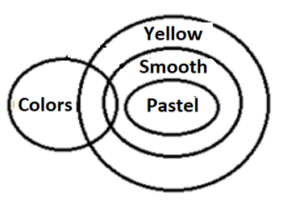
S2. Ans. (b)
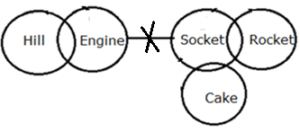
S3. Ans. (e)

S4. Ans. (e)
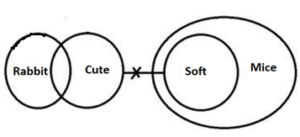
S5. Ans. (a)
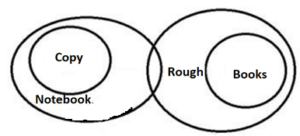
S6. Ans. (d)

S7. Ans. (c)

S8. Ans. (e)

S9. Ans. (d)

S10. Ans. (b)

S11. Ans. (c)
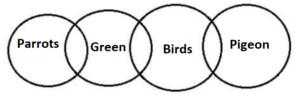
S12. Ans. (e)

S13. Ans. (e)
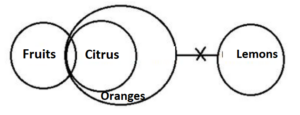
S14. Ans. (d)
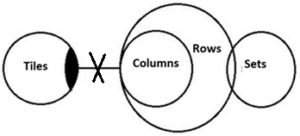
S15. Ans. (e)

S16. Ans. (e)

S17. Ans. (c)

S18. Ans. (d)

S19. Ans. (a)
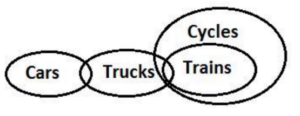
S20. Ans. (a)

S21. Ans. (a)
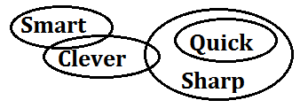
S22. Ans. (d)

S23. Ans. (c)

S24. Ans. (e)
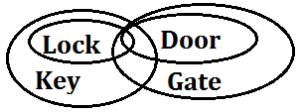
S25. Ans. (e)
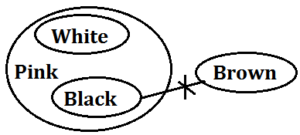
S26. Ans. (b)

S27. Ans. (a)

S28. Ans. (b)

S29. Ans. (b)
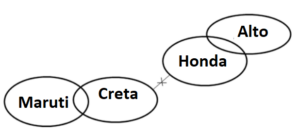
S30. Ans. (e)

| Related Posts | |
| SBI PO Cut-Off | SBI PO Notification |
| SBI PO Salary | SBI PO Preparation Strategy |
| SBI PO Exam Date | SBI PO Previous Year Question Papers |
| SBI PO Syllabus | SBI PO Exam Pattern |

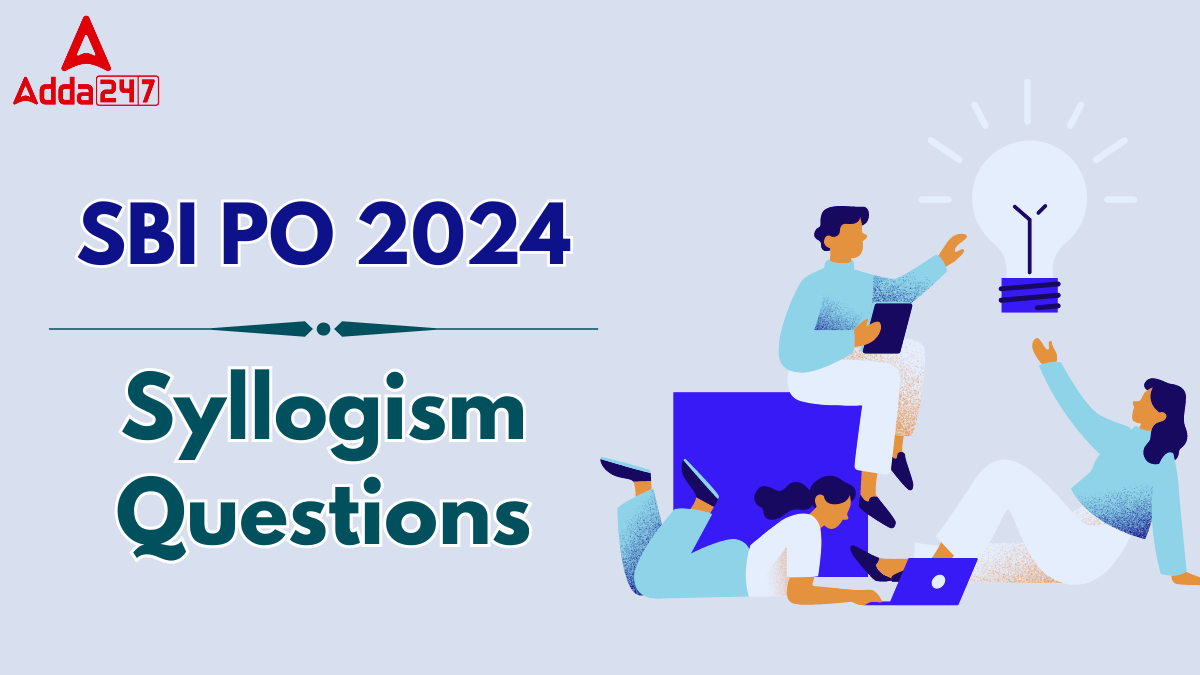


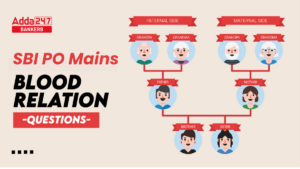 Important Blood Relation Questions for S...
Important Blood Relation Questions for S...
 Seating Arrangement Questions for SBI PO...
Seating Arrangement Questions for SBI PO...
 Inequality Questions for Bank Exams
Inequality Questions for Bank Exams





